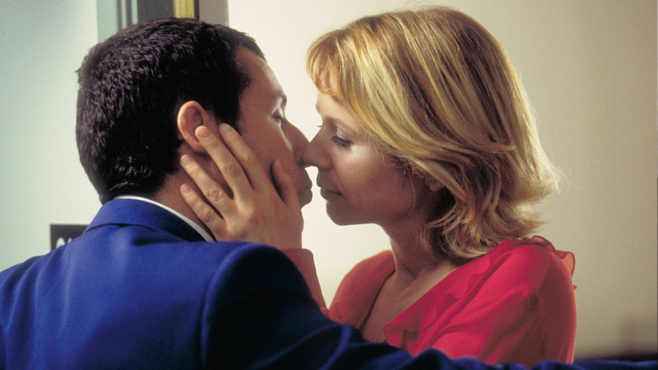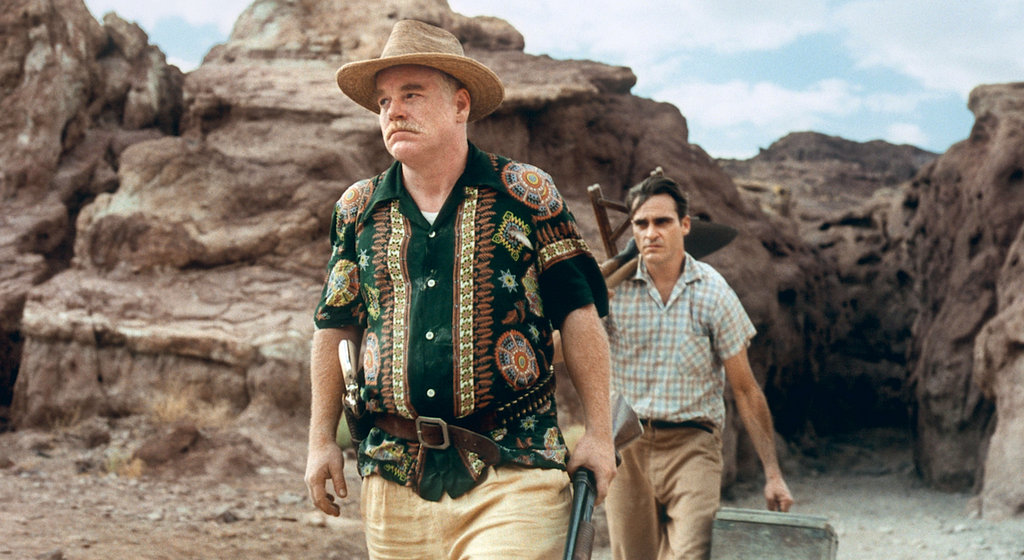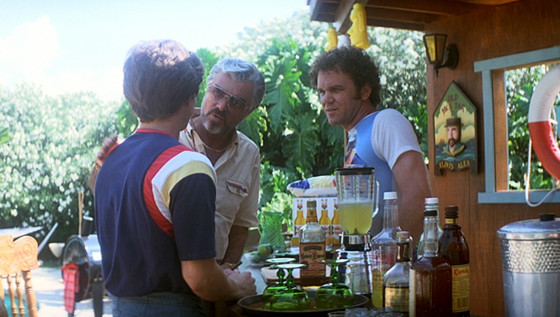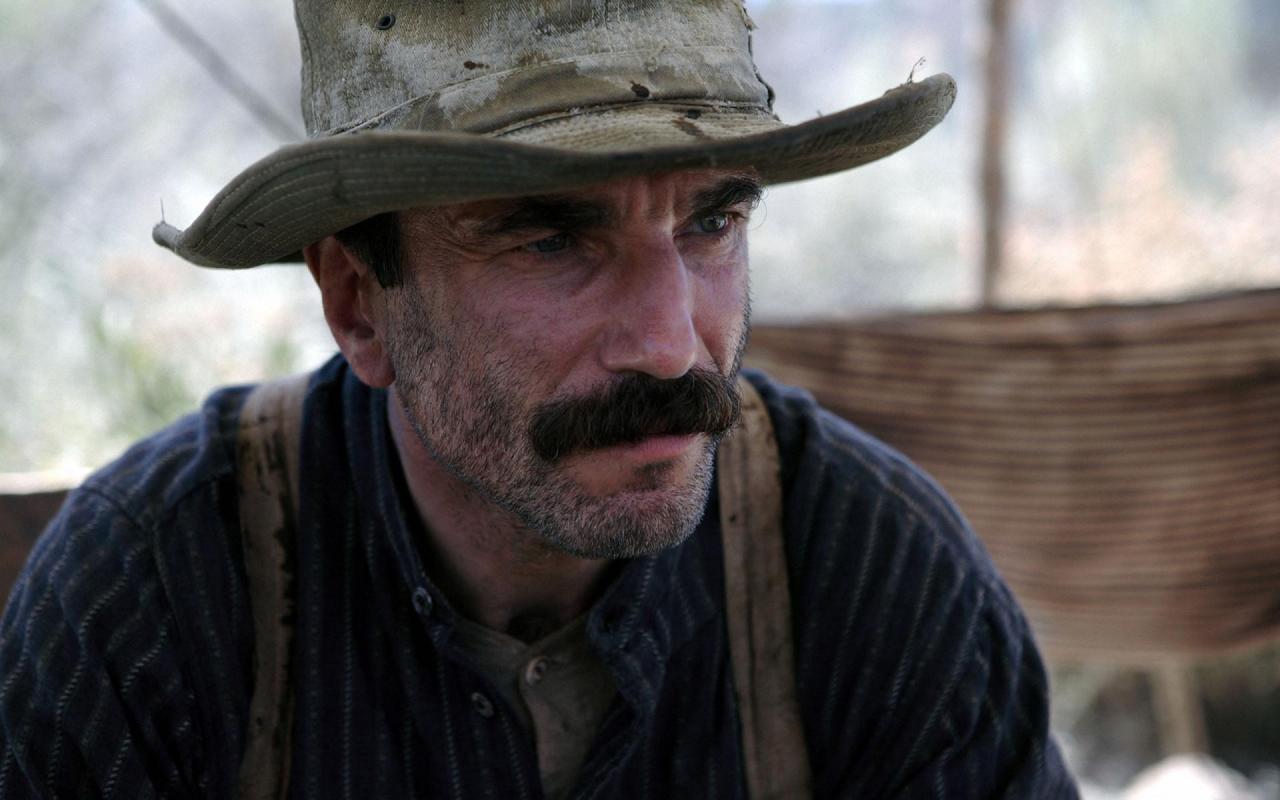5. Punch-Drunk Love (2002)

It speaks of Anderson’s virtues as a screenwriter that out of his lengthy canon of male protagonists, featuring greedy oil tycoons, tormented war veterans and junkie pornstars alike, his most accomplished one happens to be a toilet plunger manager.
Fresh off two gargantuan productions in Boogie Nights and Magnolia, the director wisely decided to scale things down for his fourth feature. This resulted in his most tender work to date, a touching character study in the guise of a frivolous 96-minute long rom-com. Punch-Drunk Love probes into similar themes as Magnolia, from the value of self-acceptance and human connection to the trivial, unpredictable nature of life. However, while its predecessor mostly exuded pathos and self-importance, PDL examined them through a more lighthearted, almost whimsical, lens.
Adam Sandler—whose talents have never been better utilized—plays Barry Egan, a socially awkward man who hides his inner turmoil behind a facade of outward serenity. Barry is everyone’s favorite punching bag, whether it’s being bossed around at the workplace or feeling emasculated at the hand of his tormenting sisters. From purchasing an exorbitant amount of pudding as part of a frequent flyer miles scheme to fumbling himself into a phone sex line scam, Barry’s childlike naïveté is often played for laughs, but never at the expense of the character. The film triumphs by never reducing him to slapstick comedy, allowing for all his eccentricities while retaining a strong sense of relatability to his many ordeals.
Barry goes through a lot in this movie and watching him carelessly navigate his life can be emotionally taxing. But of all the unlikely romances Anderson has concocted through his illustrious career, the one that brings him and Lena together remains the most cathartic, precisely because it stems from a powerful breakthrough in Barry’s part—the realization that everyone, no matter how flawed, is deserving of love and affection.
4. The Master (2012)

A closer look at PTA’s collection of broken characters suggests a fair share of common traits. Lonely and directionless, these wounded individuals find themselves in a constant state of spiritual malaise where their only option to cope with grief is to seek shelter elsewhere—be it shiny casinos, adult film studios or shady cults. The latter applies to Freddie Quell (Joaquin Phoenix), a dysfunctional and alcoholic WW2 veteran who unwittingly stumbles upon Lancaster Dodd (Philip Seymour Hoffman), a shrewd leader with a knack for grandiloquent speeches and empty promises (said to be loosely inspired by the founder of the Church of the Scientology, L. Ron Hubbard).
The Master rests entirely upon the ever-shifting dynamic between these two markedly asymmetrical men; master and pupil, one charismatic, cultured and calculated; the other, impulsive, untamed and irrational. Their rocky relationship finds its closest parallel in Phantom Thread’s twisted game of control and submission—a symbiotic bond ultimately broken by the person who first stood at a power imbalance. Anderson’s sixth feature also works as a bleak indictment of the way these types of organizations operate in real life: by preying on the weak and coaxing vulnerable targets into joining their ranks. In that regard, The Cause represents a distorted mirror image of Boogie Nights’ sense of communal belonging as a surrogate family that thrives on despair rather than affection.
All-time performances are a rare commodity; finding two in the same picture is nothing short of a miracle. Against all odds, Hoffman and Phoenix accomplished the unlikely feat of living up to Daniel Day-Lewis’ magnetic display five years prior. Overall, The Master is widely considered as Anderson’s least accessible work, and for good reason. The film plays its cards closely and refuses to adhere to any kind of traditional progression, thrusting us instead into an inscrutable narrative that fully lends itself to introspection. But that is not to say it doesn’t pack a punch—once you surrender to its elliptic rhythms, The Master is an enthralling watch that still opens up to new interpretations on repeated viewings.
3. Boogie Nights (1997)

History has taught us that even the most talented of auteurs have had to endure some growing pains before truly hitting their stride. Hence, the most exceptional aspect of Anderson’s meteoric rise remains that he did so with no such thing as an adaptation period—something which certainly contributed to his stature as America’s latest wunderkind.
Hard Eight’s convoluted production left a sour taste in the director’s mouth, after which he swore never to let studio heads meddle with his vision again. Hot on the heels of Pulp Fiction, a cultural behemoth that sent shockwaves all around the industry and opened the floodgates for a new influx of studio-backed indie features, 27-year-old Anderson was given carte blanche for his sophomore project. The result was a sprawling epic where he refined and expanded upon the talent shown in his debut, thrusting him into the limelight and officially establishing him as a household name in his own right.
Set against the backdrop of the ’70s porn industry, Boogie Nights follows a classic rise and fall cautionary tale through Eddie Adams’ (Mark Wahlberg) metamorphosis from nightclub busboy to thriving porn star. The film wears its inspiration openly, taking cues from Robert Altman’s kaleidoscopic narratives and Martin Scorsese’s energetic camerawork. A lesser director would’ve easily gotten carried away by the showbiz extravaganza, but Anderson never loses sight of the emotional backbone anchoring the story. At its core, the film is as much about the American Dream and X-rated entertainment as it is about the sense of camaraderie and shared community that springs from these ventures. Jack Horner’s lavish mansion—and by extension, the porn industry—is depicted as a safe haven for social misfits and stranded souls. Likewise, erotic filmmaking is seen not simply as an exploitative form of hedonism but a respectable craft that can imply artistic merit.
The sheer entertainment value of Boogie Nights makes it an ideal entry point to Anderson’s catalog—a film that unfolds at breakneck speed without ever losing a step. Though not necessarily his most polished, to this day this film figures as the most captivating the director’s come up with.
2. There Will Be Blood (2007)

Anderson’s fifth feature tells the story of Daniel Plainview (Daniel Day-Lewis in one of the best performances in recent memory), a turn-of-the-century oil prospector who treks across California’s desert with his adopted son in pursuit of wealth and power. His rebirth as a ruthless tycoon follows a tale as old as time—that of greed and ego as the root of all evil. But There Will Be Blood presents itself as a true American tragedy, a timeless epic that belongs in the same discussion as Citizen Kane and Chinatown as a scathing portrait of capitalism and all the rotten principles that lie beneath it.
Through Plainview and his on-screen nemesis, an Evangelical preacher named Eli (Paul Dano), Anderson examines the two mightiest forces known to mankind—money and faith; commerce and theocracy. These two moral codes are pitted against each other, sowing destruction and rallying endless innocents to their causes. The film’s central feud takes larger-than-life stakes, dwarfing any Anderson story that preceded it—almost as if our civilization was stripped bare and our fate hanged on the balance.
Time has turned hyperboles into foregone conclusions, and There Will Be Blood now comfortably enjoys its place in the upper echelons of American cinema as a staggering achievement in modern filmmaking. Chances are when it’s all said and done, this is the film we remember PTA by the most.
1. Magnolia (1999)

After cutting his teeth in Boogie Nights, Paul Thomas Anderson decided to pull every trick up his sleeve in his next project. As such, Magnolia is a film of excesses; an operatic symphony imbued with all the pomposity and self-importance of a young filmmaker with a chip on his shoulder who couldn’t wait to get his vision out in the open. The movie echoes Robert Altman’s ensembles (Short Cuts in particular) by weaving through a myriad of interlocked Los Angeles stories all taking place during the course of one day. The result is an unbridled tapestry of suburban malaise, millennial anxiety and intergenerational trauma all threaded together in a three-hour long crescendo that hints at an impending doom before sliding towards a climax of biblical proportions.
For the most part, Magnolia plays like a sort of ‘best hits’ of PTA’s career—crippling daddy issues, lingering regrets, unresolved grudges, unhealthy coping mechanisms… From TV personalities, cops and drug addicts, out of this sundry line-up of damaged goods everyone seems to be battling some kind of repressed complex or atoning from past sins. Anderson uses his lavish ensemble to analyze the emotional wreckage that stems from paternal shortcomings and how childhood trauma wraps its tendrils around individuals for decades to come. This paves the way to the film’s biggest undercurrent—that one simple twist of fate is all it takes to turn an entire life upside down. In Magnolia, the same capricious nature of the universe that interweaves its many threads brings them all to a halt with a thunderous final blow—an inexplicable yet oddly fitting one.
Magnolia is a film on the brink of a larger meaning. Its characters seem to tetter between enlightening epiphanies and perpetual ignorance. A story with so many layers and grandiose scope should have crumbled by its own weight, but Anderson is operating at such an insane level of confidence that he makes the film work in spite of all his indulgences. Magnolia is by no means a perfect work, but it’s a one-of-a-kind experience far greater than the sum of its parts.